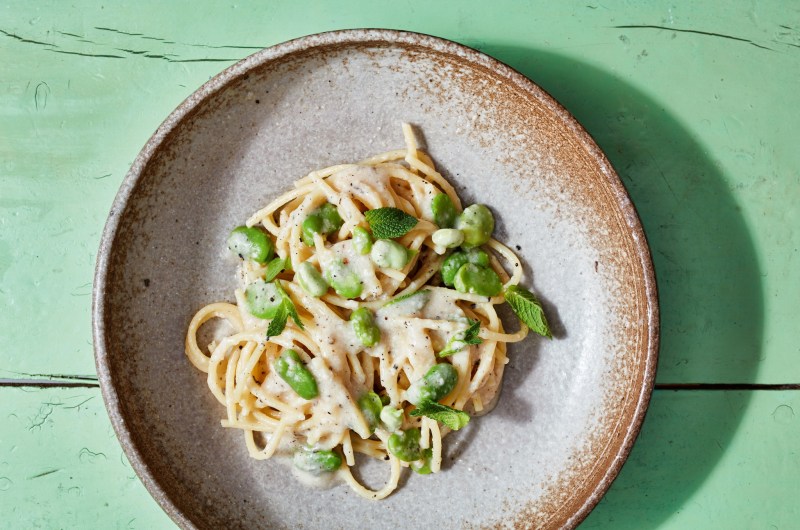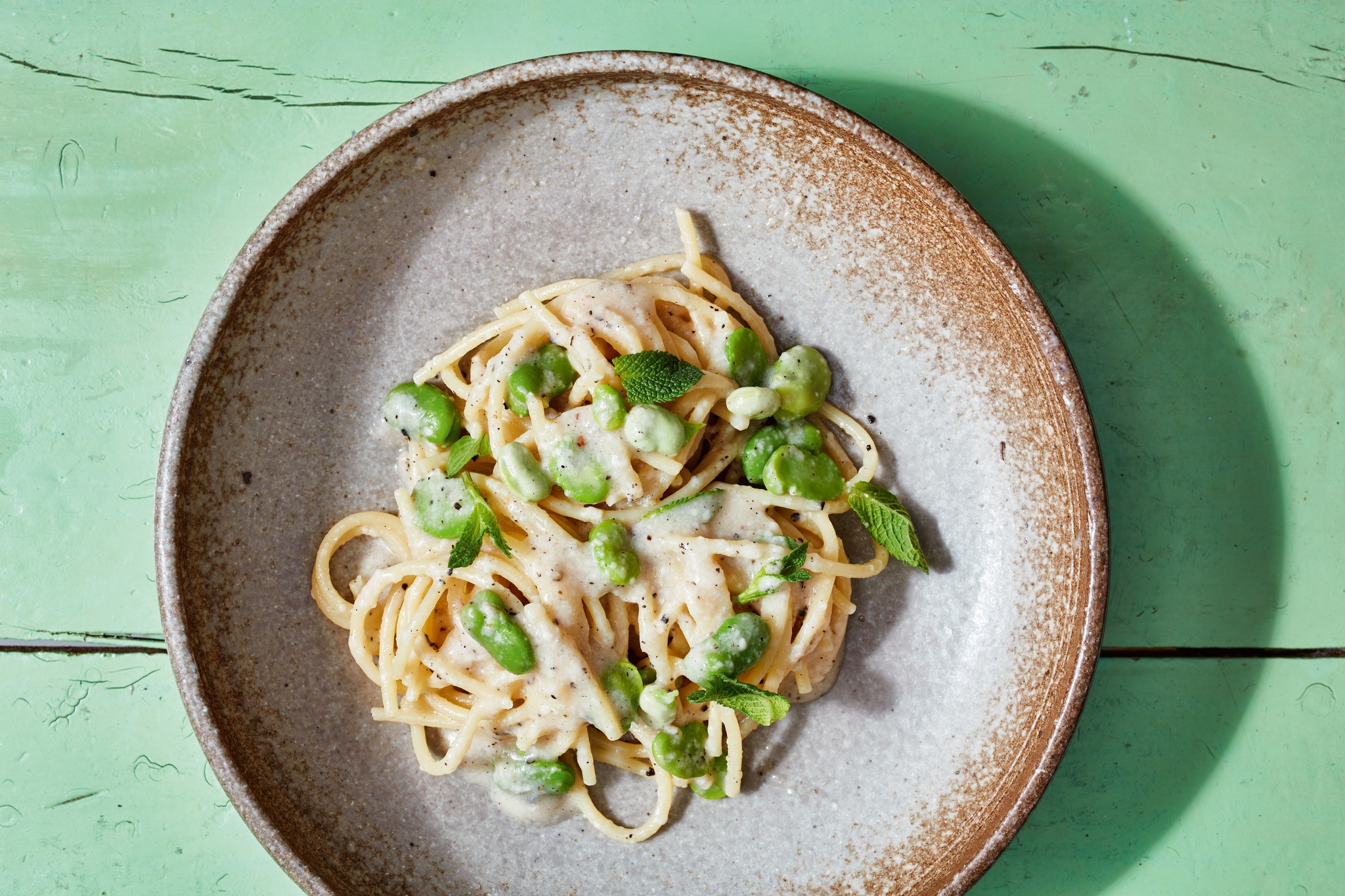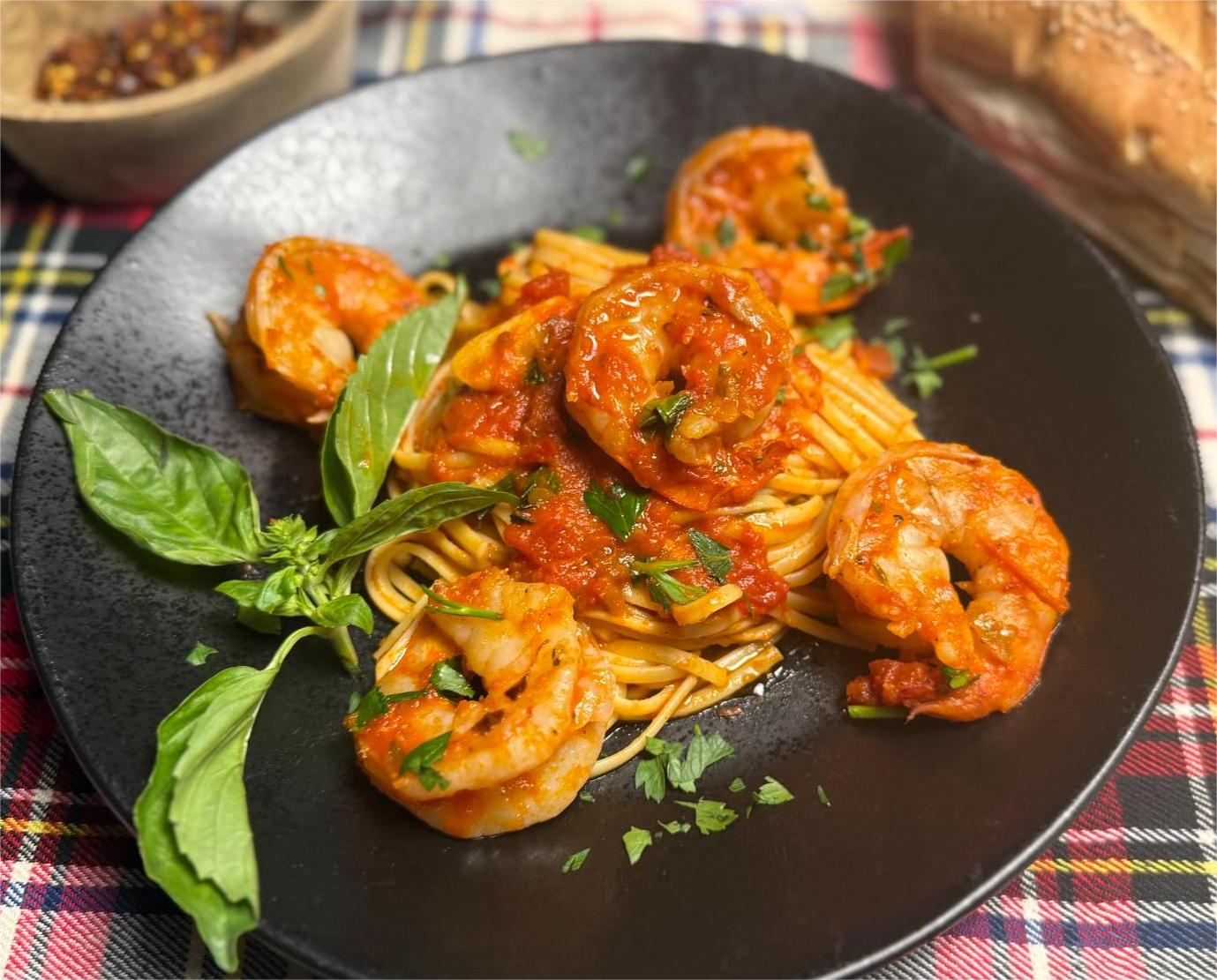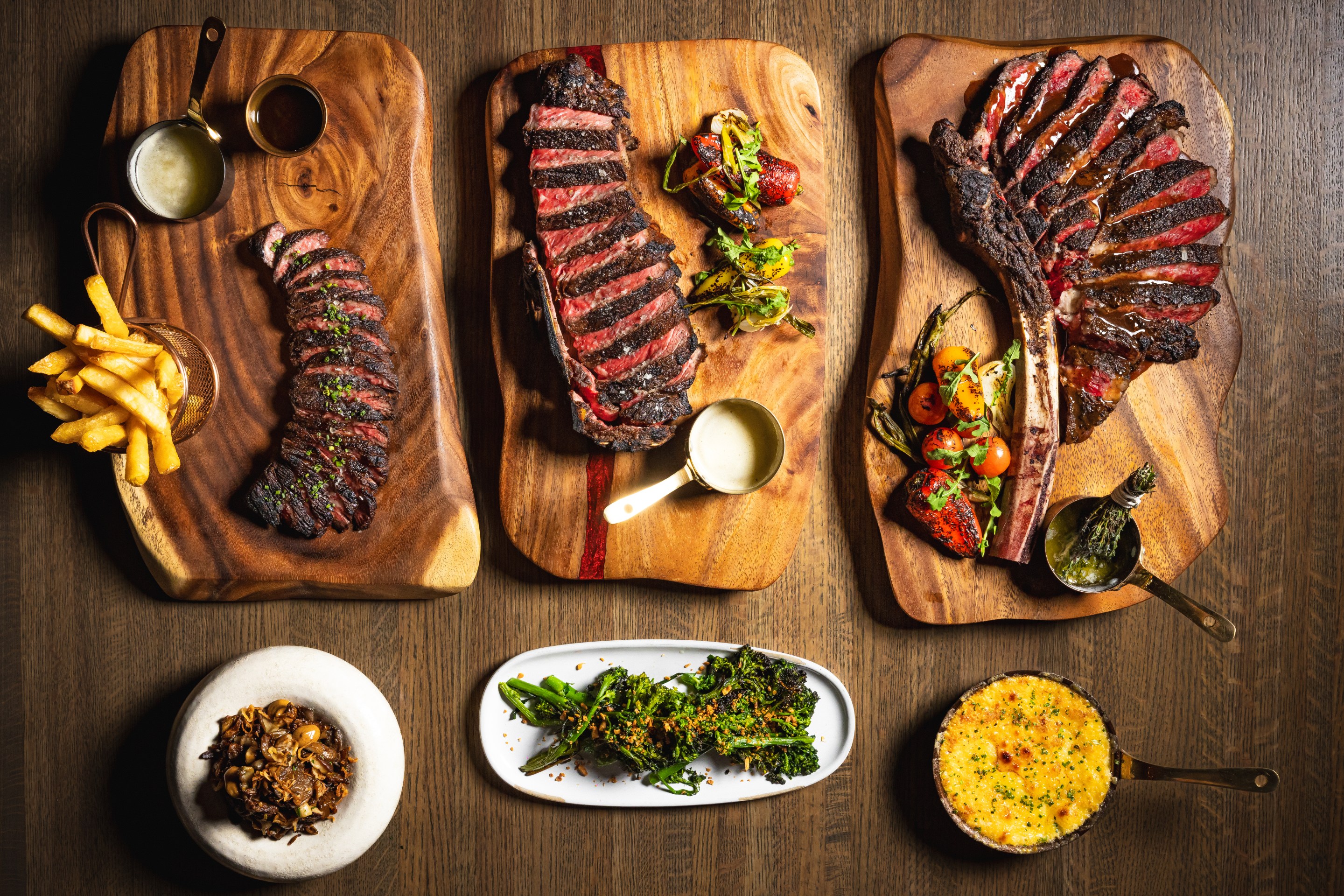Cacio e pepe is a Roman classic. The preparation shows how simple, yet ingenious Italian cuisine is. Starchy pasta water + grated cheese = creamy sauce. You do have to be careful, so you don’t end up with a melted cheese ball. If you get everything ready ahead of time and follow the instructions below, you’ll be fine.
Traditionally, you use Pecorino, but you can also mix in part Parmesan, which makes the flavor more refined. Adding the fava beans is a variation from the classic recipe and is reminiscent of the other well-known classic: fave con pecorino.
At trattoria Sora Lella in Rome, they include mint with the cacio e pepe. Mannaggia (damn!), that’s a genius addition to those hearty, peppery flavors!

Cacio e Pepe con Fava e Menta
4
servings45
minutes15
minutesIngredients
3 pounds 3 fava beans, in the pods
3 oz. 3 Pecorino, grated
4 oz. 4 Parmigano, grated
Coarse sea salt
12 ounces 12 long pasta (tonnarelli or thick spaghetti)
1 teaspoon 1 black peppercorns
Few sprigs Few mint leaves
Directions
- Start by double podding the fava beans, which is a bit of a chore (very little ones don't need to be removed from their individual shells).
- Mix the grated cheeses in a bowl.
- Bring a pot of water to a boil and salt it* (see note).
- Cook the pasta al dente because it will cook more in the skillet later.
- Meanwhile, toast the peppercorns over medium-high heat in a large skillet.
- Stop when the aroma is released, approximately 5 minutes, and then set the skillet aside (this is where the pasta will go late).
- Allow the peppercorns to cool, transfer them to a mortar or pepper grinder, and grind coarsely.
- Return the pepper to the skillet and pour a tablespoon of pasta cooking liquid over the pepper.
- Using tongs or a slotted spoon, transfer the pasta from the water, and place it in the skillet.
- Over medium heat, use a spatula to stir the pasta, pepper, and pasta water mixture together vigorously.
- Then add a bit more pasta water and stir vigorously again.
- Continue the process until the pasta has fully cooked.
- Remove the pasta pan from the heat.
- Next, mix in pasta water ½ tablespoon at a time into the melted cheese, until the sauce becomes creamy (be sure to add the water slowly and mix well, otherwise there is a chance that the cheese will get stringy!).
- Continue to stir the mixture until it becomes a kind of thick cheese paste.
- Add to the pasta and mix well.
- Pour in a little more pasta cooking liquid and then stir again.
- Repeat adding water and stirring until you have a smooth consistency that coats the pasta.
- You’ll add more pasta cooking liquid than you think because the pasta soaks it up.
Notes
- Because you need a lot of starch in the pasta water to use for the creamy sauce, put less water in the pot than usual; I also salt it less because of the salty cheese, around 1 tablespoon of coarse sea salt to 2 ½ quarts (2.4 L) of water.
Did you make this recipe?
Tag @appetitomagazine on Instagram and hashtag it with #italianfoodanddrink
Like this recipe?
Follow @Appetitomagazine on Pinterest
Follow us on Facebook!
Follow us on Facebook







